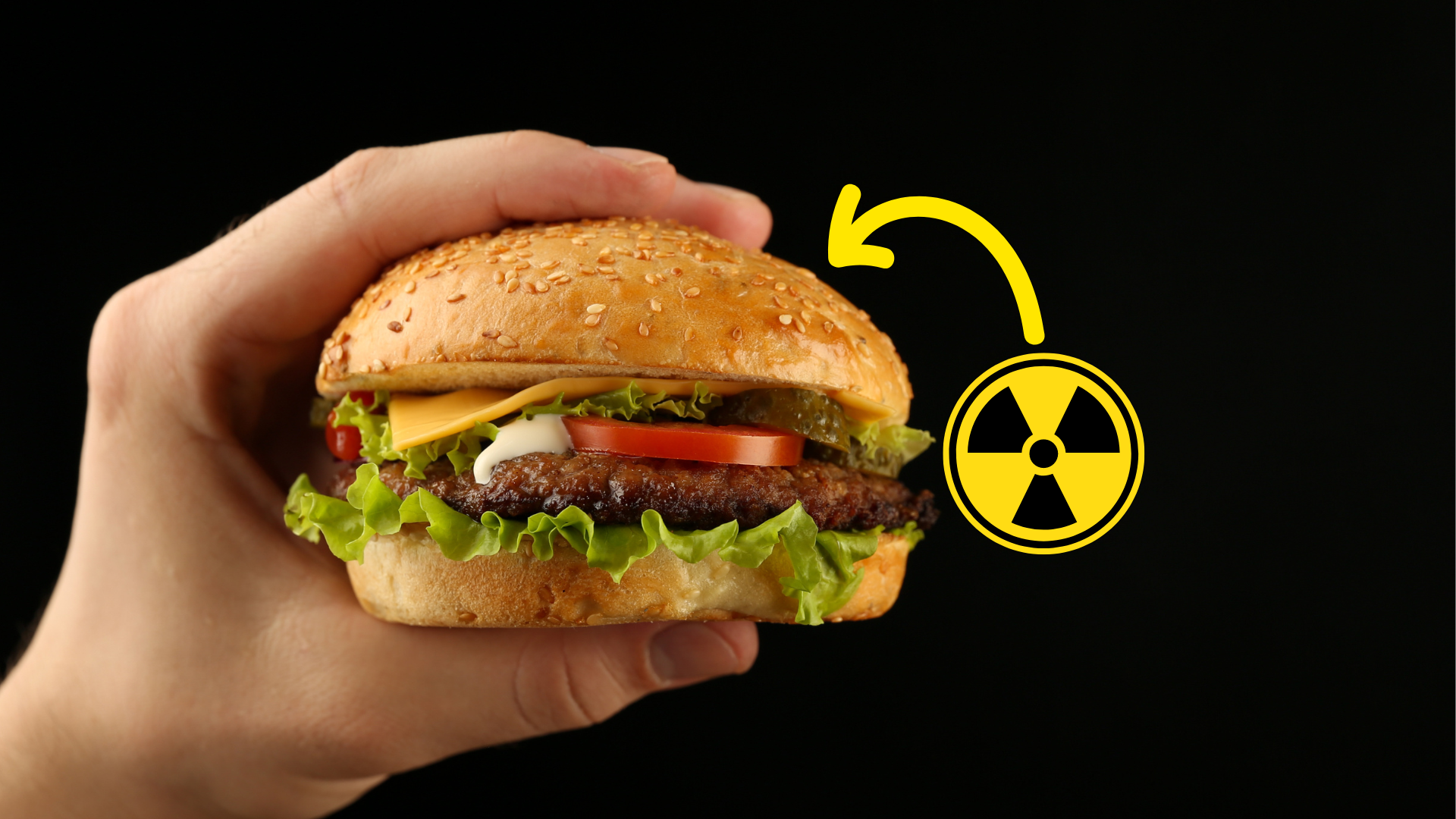Food is one of the biggest priorities for humans, and with it comes a lot of worries—like how it tastes, if it’s fresh, and whether it’s safe to eat. But sometimes, people take things even further, experimenting with food to uncover new truths about how it works.
This is the story of an unusual experiment involving a burger… and radioactivity.

The Radioactive Burger Experiment
George Hevesy, a young Hungarian scientist studying at the University of Manchester, had a hunch that his landlady was serving him leftovers disguised as fresh meals. For example, what was yesterday’s burger might reappear today as spaghetti Bolognese.
Although this wasn’t uncommon back then, especially for students living in dorms, Hevesy wanted to know for sure. So, he came up with a genius plan: sprinkle a little radioactive lead isotope, known as Pb-210, on his burger before dinner.
The next day, he brought a Geiger counter—a device that detects radiation—to the table. When the food was served, he passed the device over his plate, and it began to beep. Busted! The leftovers were definitely being reused.
From a Prank to a Life-Saving Discovery
While it might sound like just a clever prank, Hevesy’s experiment had much bigger implications. It laid the groundwork for the development of what we now call radioactive tracers—a medical breakthrough that has saved millions of lives.
Here’s how it works: By replacing a normal atom in a molecule with a radioactive one, scientists can track that molecule through biological or chemical processes. This technique allows doctors to follow molecules inside the human body, helping them see how substances move and change.
In 1923, Hevesy published his first paper on radioactive tracers. Thanks to his work, we can now trace molecules in the human body, giving us the power to observe how they move and transform. This breakthrough allows for earlier and more accurate diagnoses of diseases, including cancer.
The Legacy of Radioactive Tracers
In 1943, George Hevesy won the Nobel Prize in Chemistry, not just for discovering radioactive tracers but for advancing techniques that continue to save lives today. His work led to the development of medical imaging technology that helps detect serious conditions like cancer and brain disorders.
Interestingly, while the use of radiation to preserve food still exists, the fear of food being “contaminated” by radiation lingers. But, food irradiation today is completely different from nuclear radiation—it’s safe, and it helps keep food fresh for longer.
The real magic, however, lies in the medical world. Radioactive tracers give us clearer images of the human body, making it easier to spot problems like tumors. Doctors can now detect cancerous activity much faster and with greater precision, giving patients a better chance at recovery.
How a Student’s Joke Revolutionized Medicine
What started as a curious student’s prank turned into a revolutionary tool in medicine. By using radioactive tracers, doctors can now identify areas of high metabolic activity, which are often linked to cancerous tumors. Thanks to George Hevesy’s work, millions of lives have been saved through quicker and more accurate diagnoses.
So next time you hear about a “radioactive burger,” remember that a simple experiment with leftovers helped change the future of medical science forever. From a joke to a Nobel Prize—now that’s one unforgettable meal!
